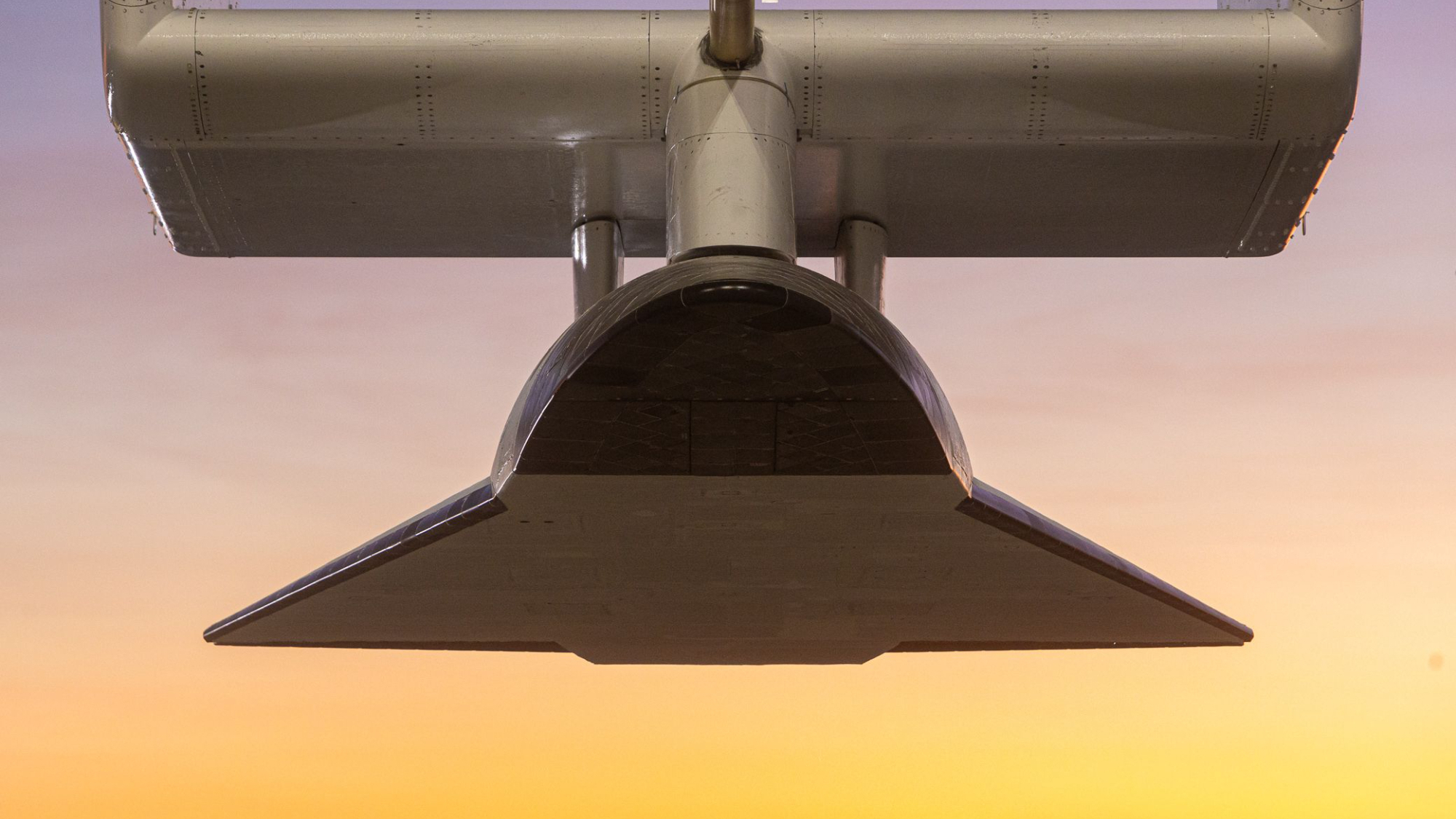Stratolaunch's huge Roc plane flies with fueled-up hypersonic vehicle for 1st time (photos)

The world's biggest airplane took to the skies over the weekend with a new type of payload under its expansive wings.
Stratolaunch's Roc carrier plane conducted its first-ever captive-carry flight with a powered and fueled-up hypersonic test vehicle on Sunday (Dec. 3).
The main goal was to evaluate the propulsion system of that vehicle — the first of Stratolaunch's robotic Talon-A craft, known as TA-1 — and to see more generally how it behaves while being carried in flight, company representatives said.
"Talon-A's propulsion system supports a liquid-propellant rocket engine that provides the thrust needed for Talon-A to reach hypersonic speeds," Stratolaunch CEO Zachary Krevor said in a statement on Sunday.
"While we have conducted several successful ground tests fueling and igniting the system, we needed to evaluate how the system performs in the flight environment prior to release," he added. "Initial results from today's flight show that the system has performed as predicted, and we will determine our next steps pending the full data review of the test."
Related: Stratolaunch test photos: The world's largest plane in action
Sunday's flight was the 12th overall for Roc, which has a wingspan of 385 feet (117 meters). The huge, twin-fuselage plane had last flown in May of this year, when it performed its first-ever drop test with a Talon prototype.
Breaking space news, the latest updates on rocket launches, skywatching events and more!
Roc stayed aloft for three hours and 22 minutes on Sunday's sortie, which originated from the Mojave Air and Space Port in Southern California. TA-1 stayed attached to its carrier plane from liftoff to landing.
The flight "represented a significant step forward in the company's near-term goal of completing a powered flight with the Talon-A vehicle," company representatives said in the same statement.
Stratolaunch was founded by Microsoft's Paul Allen in 2011. The initial aim was to air-launch rockets from high in Earth's atmosphere, much as Virgin Galactic sends tourists aloft using its WhiteKnightTwo carrier plane and VSS Unity spaceliner.
But in 2019, a year after Allen's death, the company's focus shifted: It now intends to use Roc as a platform for hypersonic research and development. (Hypersonic vehicles are highly maneuverable craft capable of flying at least five times faster than the speed of sound.)
The reusable Talon-A craft will be Stratolaunch's first line of hypersonic vehicles, though others are in the offing; the company's website also teases a Talon+ vehicle, as well as a space plane.
Stratolaunch has already inked some customers for its hypersonic services. Last week, for example, the company announced that it had signed a contract with Leidos, the prime contractor for the U.S. Navy's Multiservice Advanced Capability Test Bed (MACH-TB). The deal funds five hypersonic flights with Talon-A vehicles.

Michael Wall is a Senior Space Writer with Space.com and joined the team in 2010. He primarily covers exoplanets, spaceflight and military space, but has been known to dabble in the space art beat. His book about the search for alien life, "Out There," was published on Nov. 13, 2018. Before becoming a science writer, Michael worked as a herpetologist and wildlife biologist. He has a Ph.D. in evolutionary biology from the University of Sydney, Australia, a bachelor's degree from the University of Arizona, and a graduate certificate in science writing from the University of California, Santa Cruz. To find out what his latest project is, you can follow Michael on Twitter.


